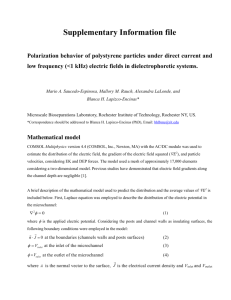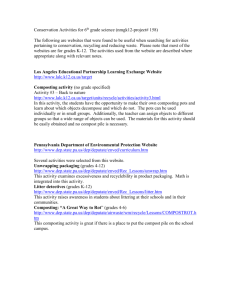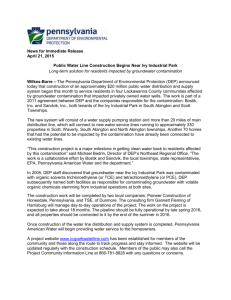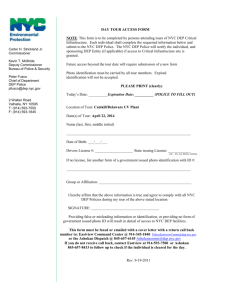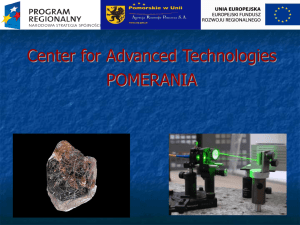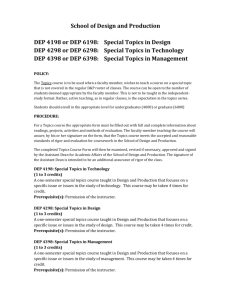cea12597-sup-0002-Supinfo
advertisement
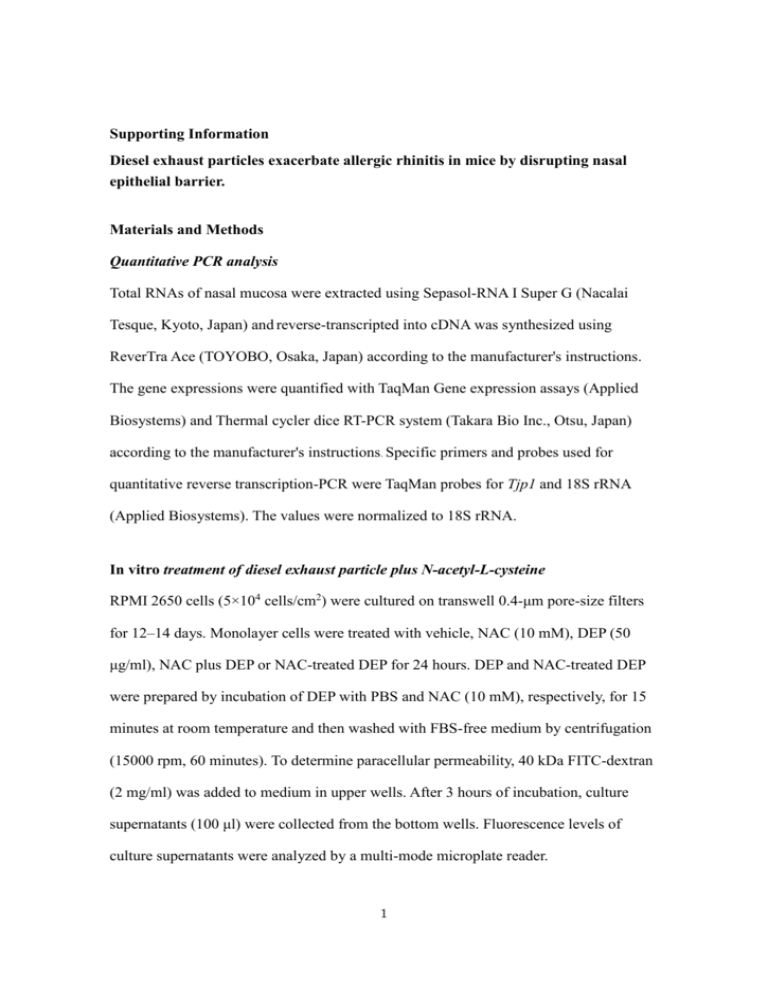
Supporting Information Diesel exhaust particles exacerbate allergic rhinitis in mice by disrupting nasal epithelial barrier. Materials and Methods Quantitative PCR analysis Total RNAs of nasal mucosa were extracted using Sepasol-RNA I Super G (Nacalai Tesque, Kyoto, Japan) and reverse-transcripted into cDNA was synthesized using ReverTra Ace (TOYOBO, Osaka, Japan) according to the manufacturer's instructions. The gene expressions were quantified with TaqMan Gene expression assays (Applied Biosystems) and Thermal cycler dice RT-PCR system (Takara Bio Inc., Otsu, Japan) according to the manufacturer's instructions. Specific primers and probes used for quantitative reverse transcription-PCR were TaqMan probes for Tjp1 and 18S rRNA (Applied Biosystems). The values were normalized to 18S rRNA. In vitro treatment of diesel exhaust particle plus N-acetyl-L-cysteine RPMI 2650 cells (5×104 cells/cm2) were cultured on transwell 0.4-μm pore-size filters for 12–14 days. Monolayer cells were treated with vehicle, NAC (10 mM), DEP (50 μg/ml), NAC plus DEP or NAC-treated DEP for 24 hours. DEP and NAC-treated DEP were prepared by incubation of DEP with PBS and NAC (10 mM), respectively, for 15 minutes at room temperature and then washed with FBS-free medium by centrifugation (15000 rpm, 60 minutes). To determine paracellular permeability, 40 kDa FITC-dextran (2 mg/ml) was added to medium in upper wells. After 3 hours of incubation, culture supernatants (100 μl) were collected from the bottom wells. Fluorescence levels of culture supernatants were analyzed by a multi-mode microplate reader. 1 Supplementary figure legends Fig S1. Dose-dependent effects of diesel exhaust particles on sneezing in ragweed-pollen-induced allergic rhinitis. Mice were sensitized and challenged as described in Fig. 1a. Diesel exhaust particles (DEP) were used at various concentrations (1, 3, 10 μg/body). Number of sneezing episodes was counted over a 10-minute period immediately after challenge. Graph represents pooled data from two independent experiments (mean and SEM of n=5; Vehicle and DEP group, n=6; RW and RW+DEP group). Fig S2. Diesel exhaust particles do not augment Th2-type immune responses in ragweed pollen-induced allergic rhinitis. (a) Cervical lymph node (cLN) cells were cultured with ragweed extract for 5 days in the presence of antigen-presenting cells and IL-2. Cytokine levels in the culture supernatants were measured by ELISA. (b) Histological analysis of nasal mucosa after 4 days of challenge. V, vehicle. P, PBS. D, diesel exhaust particles. R, ragweed pollen. Graphs represent pooled data from three independent experiments (mean and SEM of n=9 mice per group). Fig S3. Diesel-exhaust-particles-induced tight junction disruption is not mediated by cell death in a cultured nasal epithelial cell line. RPMI 2650 cells were treated with diesel exhaust particles (DEP) (0, 25, 50 or 100 μg/ml) for 24 hours. Dead cells were counted by trypan blue staining. Data are representative of two independent experiments (mean and SEM). 2 Fig S4. Administration of diesel exhaust particles decrease the expression of tight junction protein. (a) Immunofluorescence staining of claudin-1. Claudin-1 (green) and DAPI (blue). Scale bar=10 µm. Images are representative of two independent experiments (n=6 mice per group). (b) qRT analysis of Tjp1 expression in nasal epithelial cells from mice 4 days after nasal administration of diesel exhaust particles (DEP). Graphs represent pooled data from three independent experiments (mean and SEM of n=9 mice per group). Fig S5. Treatment of N-acetyl-L-cysteine prevents diesel exhaust particles-induced increase in permeability of nasal epithelial cells in vitro. Monolayer RPMI 2650 cells were incubated with vehicle, N-acetyl-L-cysteine (NAC; 10 mM), DEP (50 μg/ml), NAC+DEP or NAC-treated DEP for 24 hours, and then treated with FITC-dextran (2 mg/ml) for 3 hours. Culture supernatants from bottom wells were collected, and fluorescence levels were measured by fluorometer. NAC-treated DEP was prepared by incubation with NAC (10 mM) for 15 minutes at room temperature. Data are representative of three independent experiments (mean and SD of triplicate cultures). *P < 0.05. **P < 0.01. 3

